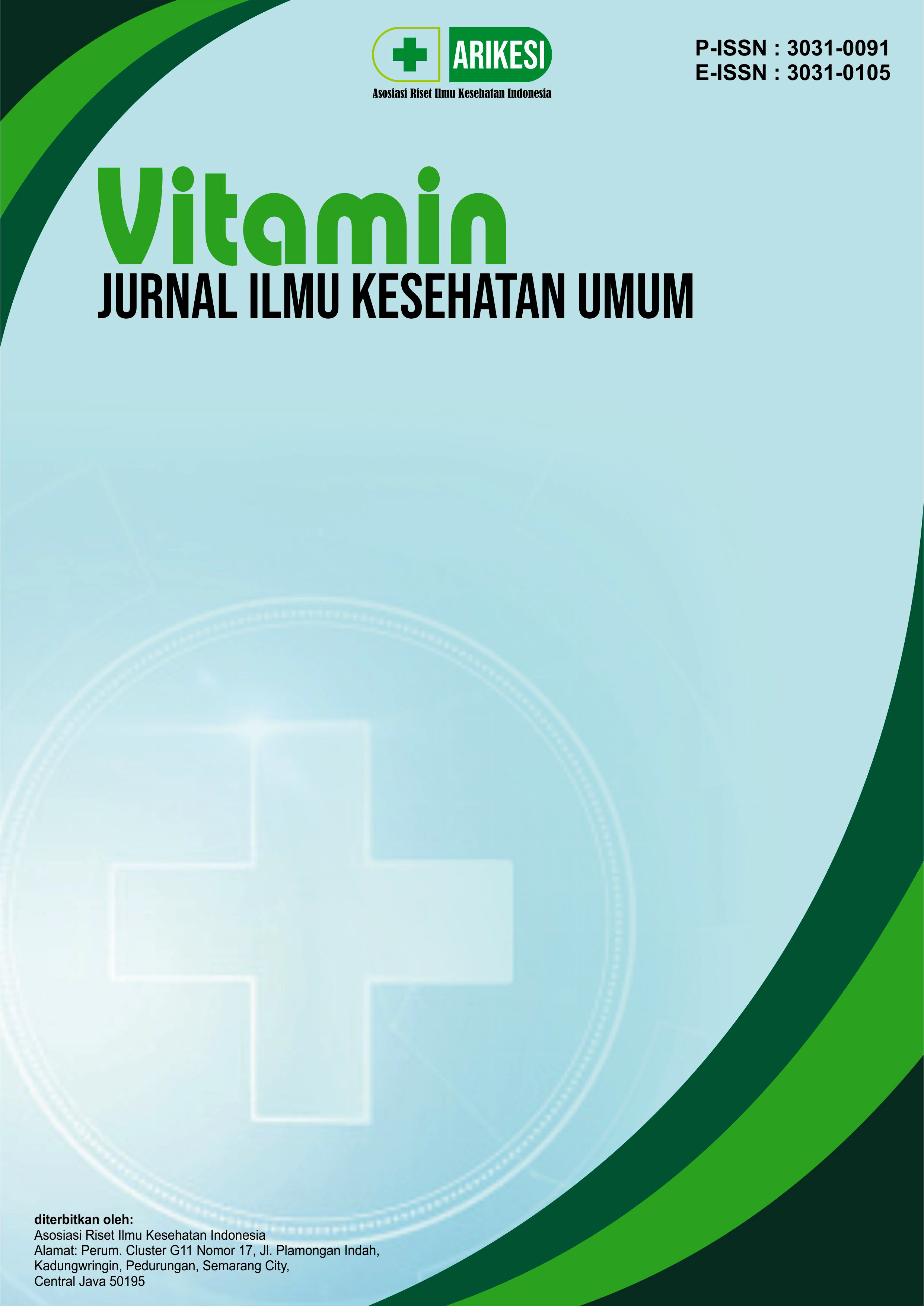Beban Kerja Perawat Dengan Penerapan Patient Safety di Instalasi Gawat Darurat (IGD)
DOI:
https://doi.org/10.61132/vitamin.v3i3.1397Keywords:
Workload, Implementation of Patient Safety, Emergency Room (IGD)Abstract
Patient safety is an important aspect of care standards that must be considered by all healthcare providers. Risk assessment, identification and management of hazards, documentation, analysis, and follow-up of accidents, and recovery provisions to reduce risks and prevent injuries are part of patient safety. The objective of this study is to determine the relationship between nurse workload and the implementation of patient safety in the Emergency Department (IGD) of Maria Walanda Maramis Regional General Hospital. The research uses a cross-sectional design. The sample in this study consisted of 22 respondents using the purposive sampling technique. Data collection on workload and the implementation of patient safety was conducted using a questionnaire, and analyzed using the Spearman rho statistical test. The research results majority of the workload was found to be in the light category, with 15 respondents (68.2%). The application of patient safety in the least category was poor, with 6 respondents (27.3%), while the most was in the good category, with 16 respondents (72.7%). The results of the Spearman rho test obtained a p-value of 0.032 where < α 0.05. Conclusion: There is a relationship between the nurses' workload and the implementation of patient safety in the Emergency Room (IGD) of Maria Walanda Maramis Regional General Hospital. It is recommended that nurses become more aware of the importance of fatigue management and effective coping strategies to maintain the quality of patient care.
Downloads
References
Bakker, A. B., & Demerouti, E. (2017). The job demands-resources model: State of the art. Journal of Managerial Psychology, 22(3), 309–328. https://doi.org/10.1108/02683940710733115
Carayon, P. (2016). Human factors and ergonomics in health care and patient safety. BMJ Quality & Safety, 25(4), 197–200. https://doi.org/10.1136/bmjqs-2015-004689
Gaba, D. M. (2020). The future vision of simulation in healthcare. Simulation in Healthcare, 15(2), 93–101. https://doi.org/10.1097/SIH.0000000000000414
Jaladara, S., Pratama, D., & Suryani, T. (2015). Patient safety practices in emergency departments: Strategies and challenges. Journal of Emergency Medicine, 42(3), 215–220. https://doi.org/10.2445/jem.2015.42.3.215
Karimi, L., Leggat, S. G., Donohue, L., Farrell, G., & Couper, G. E. (2019). Emotional rescue: The role of emotional intelligence and emotional labor on well-being and job-stress among community nurses. Journal of Advanced Nursing, 75(6), 1314–1323. https://doi.org/10.1111/jan.13985
Kementerian Kesehatan Republik Indonesia. (2020). Laporan tahunan Kementerian Kesehatan Republik Indonesia tahun 2020. Kementerian Kesehatan Republik Indonesia.
Kusumaningrum, R. P., & Rusminingsih, R. N. J. (2022). Hubungan beban kerja dengan tingkat stres kerja perawat di instalasi gawat darurat. Jurnal Kepemimpinan dan Manajemen Keperawatan, 5(1), 31–37. https://doi.org/10.32584/jkmk.v5i1.1462
Kusumaningsih, S. (2020). Workload complaints as a risk to patient safety in hospital settings. Journal of Patient Safety and Healthcare, 18(2), 98–105. https://doi.org/10.3554/jpsh.2020.18.2.98
Najihah. (2018). Budaya keselamatan pasien dan insiden keselamatan pasien di rumah sakit: Literature review. Journal of Islamic Nursing, 3(1), 1–8. https://doi.org/10.24252/join.v3i1.5469
Peraturan Menteri Kesehatan Republik Indonesia. (2018). Peraturan Menteri Kesehatan Republik Indonesia Nomor 39 Tahun 2018 tentang Keselamatan Pasien di Fasilitas Kesehatan. Kementerian Kesehatan Republik Indonesia.
Puspitasari, R., Wahyuni, S., & Setiawan, B. (2021). Workload and patient safety implementation among nurses: A cross-sectional study. Indonesian Journal of Health Research, 13(2), 45–55. https://doi.org/10.20473/ijhr.v13i2.2021
Rachmawati, N. (2020). Patient safety and the role of healthcare services in preventing harm. Journal of Health Services Management, 12(1), 45–52. https://doi.org/10.3341/jhsm.2020.12.1.45
Riski, A., Razak, A., & Ahri, R. A. (2021). Determinan beban kerja fisik dan mental perawat dengan penerapan pasien safety pada masa pandemi Covid-19 di RSUD Labuang Baji Makassar. An Idea Health Journal, 1(2), 112–117. https://doi.org/10.53690/ihj.v1i02.52
Setiawan, A., Putri, D. F., & Hidayat, R. (2021). Faktor-faktor yang mempengaruhi penerapan keselamatan pasien di fasilitas layanan kesehatan. Jurnal Kesehatan Masyarakat, 16(2), 123–132.
Susanto, T., & Wijayanti, F. (2019). Pengaruh beban kerja dan dukungan manajemen terhadap penerapan keselamatan pasien di rumah sakit. Jurnal Administrasi Rumah Sakit Indonesia, 5(1), 45–53.
Yudi, D., Tangka, J. W., & Wowiling, F. (2019). Hubungan beban kerja fisik dan mental perawat dengan penerapan patient safety di IGD dan ICU RSU GMIM Pancaran Kasih Manado. Jurnal Keperawatan, 7(1). https://doi.org/10.35790/jkp.v7i1.22885
Downloads
Published
How to Cite
Issue
Section
License
Copyright (c) 2025 Vitamin : Jurnal ilmu Kesehatan Umum

This work is licensed under a Creative Commons Attribution-ShareAlike 4.0 International License.





